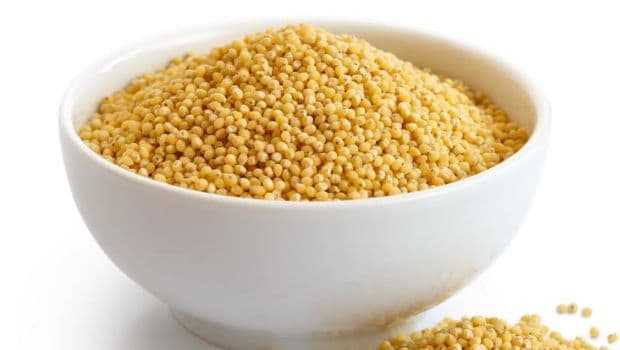For diabetics, how to manage diabetes and keep sugar levels in control is a constant thought in their minds. Maintaining a strict routine and a healthy diet with regular workout may help in attaining normal sugar level. But, it is never as simple as that. It requires a lot of dedication and efforts to manage diabetes naturally. There are no shortcuts to control sugar; paying close attention to your diet may help you speed up the process. Various health experts vouch for the daily consumption of whole grains, considering they are power-packed with essential nutrients required by the human body. In fact, the United States Department of Agriculture (USDA) recommends the adults to consume at least half of their grains as whole grains. Whole grains are rich in fibre that can help delay the absorption of glucose in the blood. This will reduce the chances of spiking blood sugar levels that can be dangerous for diabetics. Furthermore, whole grains like oats and brown rice are deemed as low-glycaemic foods that also prevent spiking blood sugar levels, reducing the chances of developing type-2 diabetes.
Here Are Some Of The Whole Grains That May Help You Manage Diabetes:
Ragi
Ragi is known to help control diabetes. The coating of the grain's seed is abundant in polyphenols and dietary fibres as compared to rice, maize or wheat. The low glycaemic index lessens food cravings and maintains the digestive pace, subsequently, keeping the blood sugar in control. According to Bangalore-based Nutritionist, Dr. Anju Sood, "It is best to add it to your morning meal or have it for lunch in order to keep your system on track the whole day."
(Also read: 6 Health Benefits Of Ragi)

Ragi flour is prepared by either crushing dried grains or spouting, drying and then grinding them.
Barley
Barley, the ancient grain, may not be that popular as compared to its other whole grain counterparts; however, its health benefits are aplenty. It is not without reason considered to be a superfood. As per the study done by Lund University in Sweden, eating a special mixture of dietary fibres found in barley may help you keep satiated as well as regulate your blood sugar levels.

Eating a special mixture of dietary fibres found in barley may help you keep your blood sugar levels in control.
Brown Rice
Various studies showed that eating four or more servings of white rice in a week leads to an increased risk of diabetes. On the contrary, eating just two servings of brown rice in a week may lower the risk. Brown rice is rich in phytic acid, fibre, and essential polyphenols. It is a source of complex carbohydrate that helps in the slower release of sugars, keeping us healthy. Replacing your daily serving of white rice with brown rice would lead in reduction of the risk of type-2 diabetes.
(Also Read: 9 Health Benefits of Switching to Brown Rice)

Brown rice can interfere with absorption of certain minerals in the body.
Bulgur
A lot of experts believe that bulgur wheat could play a similar role in the diabetes diet when eaten in place of simple, refined carbohydrates. A bowlful of bulgur (or daliya) has a very low glycaemic index; therefore, it does not get absorbed quickly and enables slow release of sugar that aids weight loss too. According to Bangalore-based nutritionist, Dr. Anju Sood, "Daliya is high in fibre that delays digestion. Because the output of sugar is not in big quantum, it is not converted into fat."

A bowlful of bulgur (or daliya) has a very low glycaemic index.
Oats
Oats are a popular choice as a healthy breakfast for many, especially for diabetics. According to the United States Department of Agriculture (USDA), a half-cup of cooked oatmeal in the morning counts as the equivalent of one-ounce serving of whole grains. Since oats help stabilise blood sugar and reduce risk of type-2 diabetes, diabetics should consume oats regularly. The high fibre and complex carbohydrates slow down the conversion of this superfood to simple sugars. Moreover, beta-glucan delays the fall in blood sugar levels before meals and slows the rise after a meal.
(Also Read: 9 Amazing Benefits Of Oats)

Oats are a rich source of complex carbs and soluble fibre.
Buckwheat
By choosing buckwheat flour instead of regular white flour, you can give a boost to your soluble fibre content, which is considered as an important part of a healthy diabetes diet. Soluble fibre helps regulate blood glucose levels. Another feature that makes buckwheat a superfood is its low glycaemic index (GI). Buckwheat has a GI of 49-51, which makes it a good choice for diabetics, and those suffering from metabolic syndrome and PCOS.

Buckwheat a superfood is its low glycaemic index (GI).
Millet
Many modern dieticians and nutritionists agree that millets are a healthy substitute to rice and wheat, mainly because of their nutritional values and low glycaemic index, which makes them more suitable for diabetics. Nutritionists give it a nod for its high fibre content. Millets are an excellent source of iron and fibre, which gives us one more reason to add it to healthy diabetes diet.
(Also Read: South Indian Millets: How Ancient Grains Are Becoming Trendy Again)

Millets are an excellent source of iron and fibre, which gives us one more reason to add it to healthy diabetes diet.
So, next time while looking for breads, cereals and tortillas in supermarket, go for the ones that have whole oats, whole rye, or buckwheat flour. The easiest way is to read the lable.
About Shubham BhatnagarYou can often find Shubham at a small authentic Chinese or Italian restaurant sampling exotic foods and sipping a glass of wine, but he will wolf down a plate of piping hot samosas with equal gusto. However, his love for homemade food trumps all.





